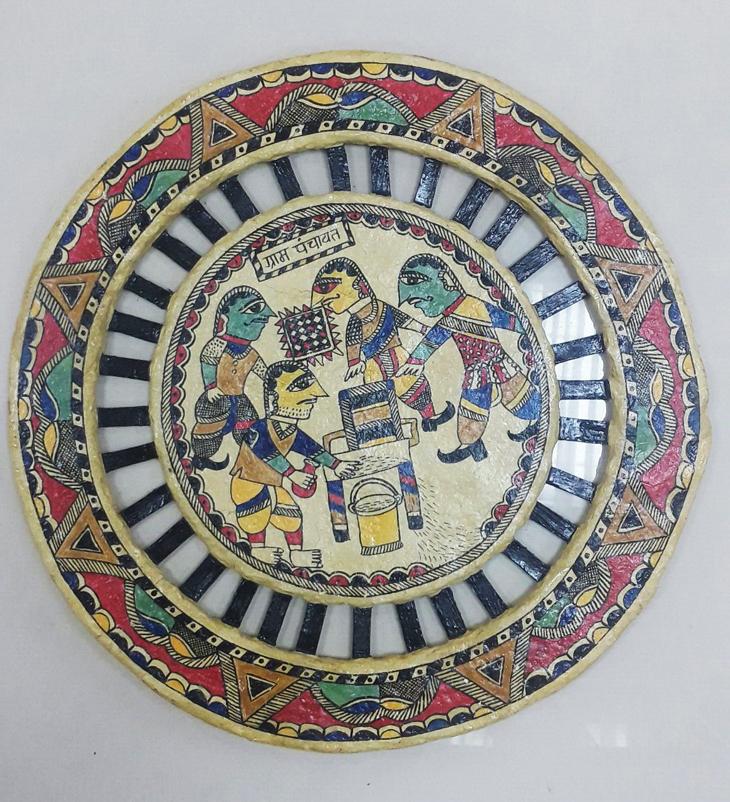This artist has depicted Gujarat’s 99 forms of untouchability on canvas
_95222_730x419-m.jpg)
Though the public flogging of a Dalit family in Una by self-appointed cow vigilantes was televised, that is not the only kind of atrocities that lower caste people have to face in Gujarat.
Well before the infamous Una flogging incident in July 2016, Dalits have been the target of various forms of discrimination and untouchability in Gujarat – irrespective of the nature and ideology of the government in the state.
Now, a Bhavnagar-based artist has painted as many as 99 forms of untouchability that are practised in the villages of Gujarat, the state hyped and marketed as ‘developed’.
99 forms of untouchability
Earning a modest livelihood as a drawing teacher in a government primary school in Sihor town of Bhavnagar district, 37-year-old Anil Vardhan took inspiration for the paintings from his short stint at the Dalit Shakti Kendra (DSK), where he came across 'Understanding Untouchability', a 2009 study that listed the 99 types of untouchability prevalent in Gujarat.
_95222.jpg)
Dalits being denied access to temples and village wells are the most well-known forms of discrimination practised in the state. Apart from depicting these ‘usual’ scenes, Anil Vardhan’s paintings have shown many more episodes of untouchability practised in Gujarat’s villages.
The scenes depicted in Anil’s paintings include separate queues for Dalits at the milk collection centre, midwives refusing to undertake deliveries of Dalit women, and many other such issues. Now, Vardhan's evocative paintings have been displayed at an exhibition in Ahmedabad.
_95222.jpg)

“The postman often doesn’t enter the cluster of Dalit houses but, instead, calls the children outside to deliver the letters to them,” Vardhan explains, pointing to a painting depicting this very phenomenon.
Vardhan has painted the untouchability scenes in the Madhubani style, on paper mesh plates especially prepared for the purpose.
Understanding untouchability
'Understanding Untouchability', the 2009 study on which Vardhan has based his paintings was conducted by Ahmedabad-based Dalits rights organisation Navsarjan and the Robert Kennedy Centre for Justice & Human Rights, USA.
The study of 1,589 villages had found a total of 99 forms of untouchability being practised against Dalits in Gujarat.
Anil has individually depicted all these 99 forms of untouchability, but only 19 of them are on display at the exhibition in Ahmedabad, along with his other paintings which have their own unique style and message. The other paintings on the untouchability practices are on permanent display at the Dalit Shakti Kendra(DSK), which empowers young people by teaching them about their fundamental rights and the principles of democracy.
“All these paintings on 99 forms of untouchability in Gujarat were done before the Una(lynching) incident,” Vardhan told Catch.
He has also done a painting on the Una lynching incident, which is currently on display at the Dalit Shakti Kendra run by human rights activist Martin Macwan.






![BJP's Kapil Mishra recreates Shankar Mahadevan’s ‘Breathless’ song to highlight Delhi pollution [WATCH] BJP's Kapil Mishra recreates Shankar Mahadevan’s ‘Breathless’ song to highlight Delhi pollution [WATCH]](https://images.catchnews.com/upload/2022/11/03/kapil-mishra_240884_300x172.png)

![Anupam Kher shares pictures of his toned body on 67th birthday [MUST SEE] Anupam Kher shares pictures of his toned body on 67th birthday [MUST SEE]](https://images.catchnews.com/upload/2022/03/07/Anupam_kher_231145_300x172.jpg)






